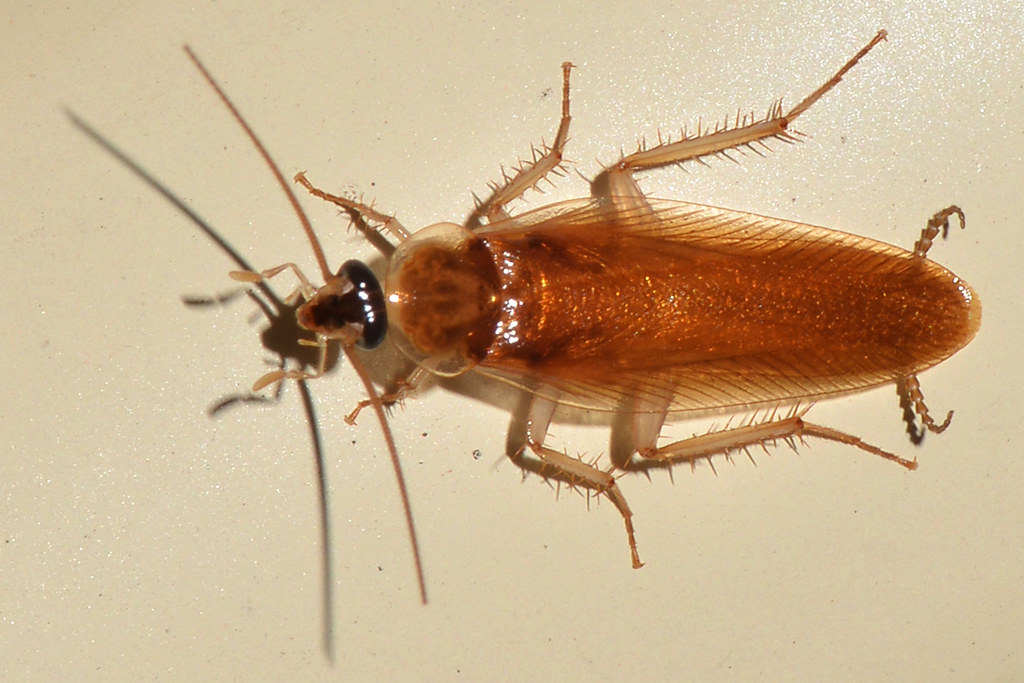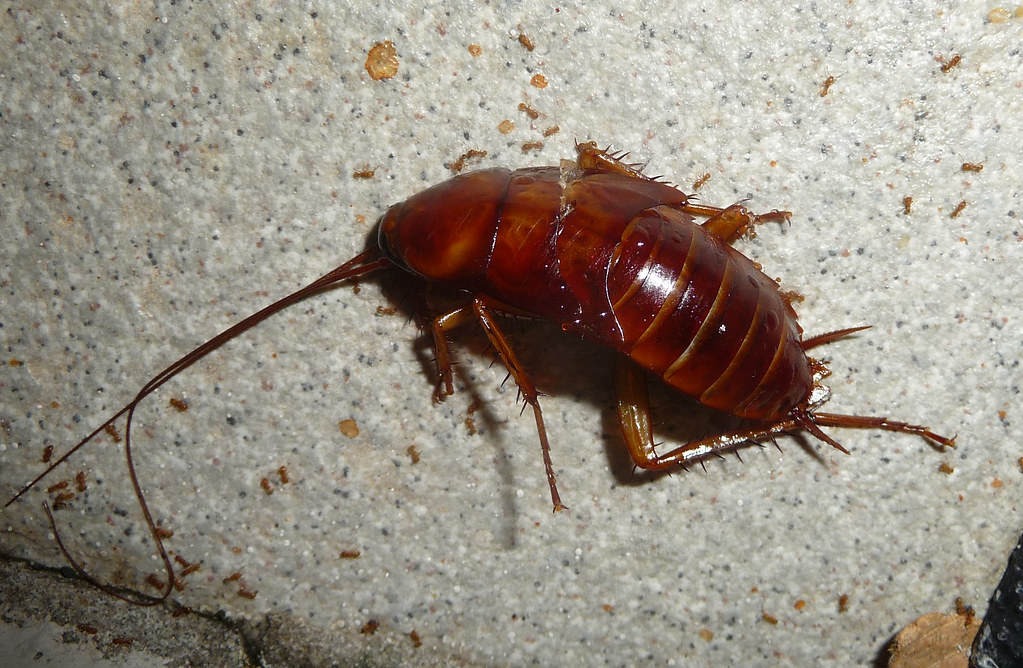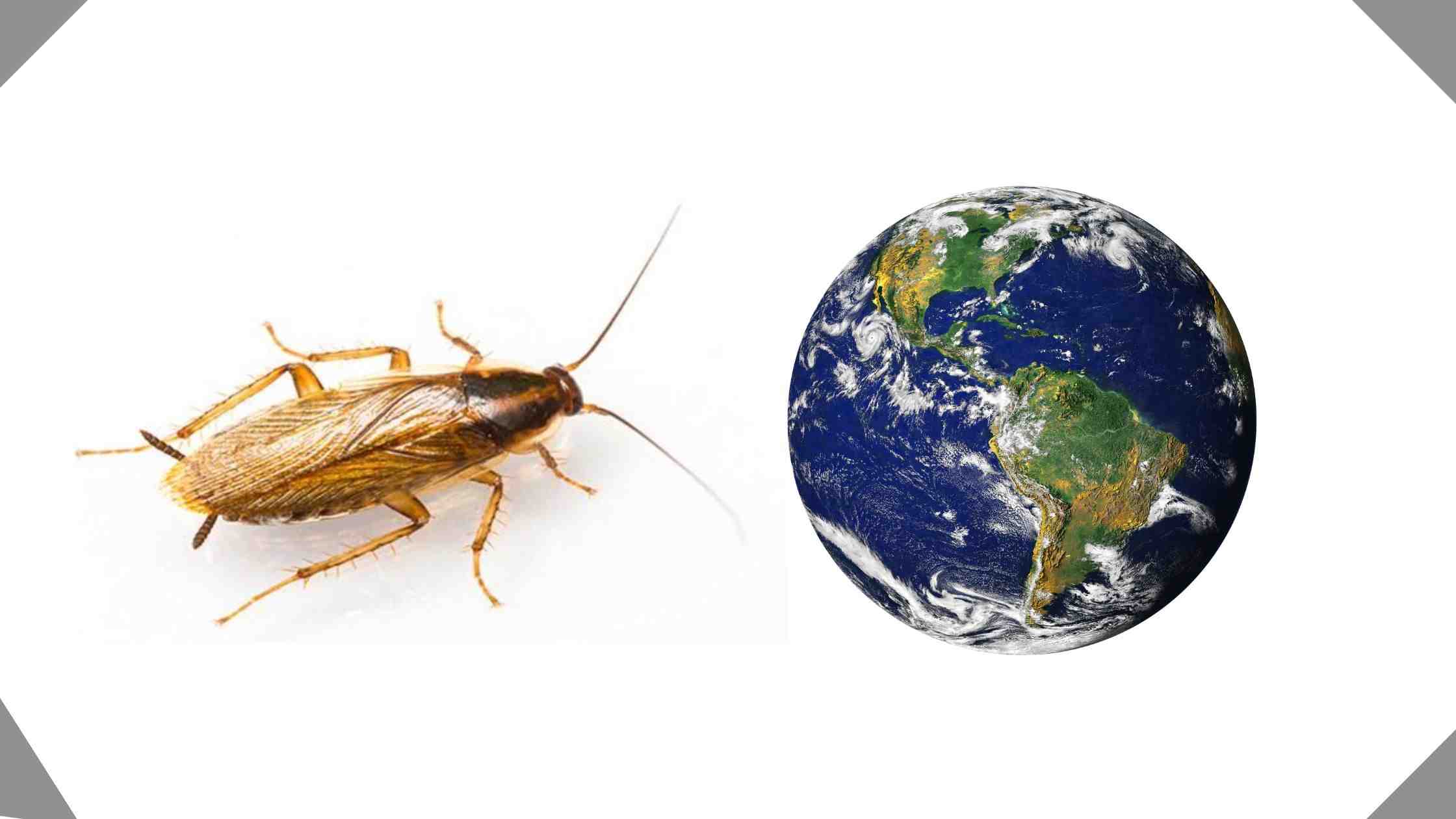In a world teeming with diverse life forms, one of the most resilient and adaptable creatures is the cockroach. These tiny yet tenacious insects have survived for millions of years, enduring various cataclysms and adapting to almost every environment on Earth.
But have you ever wondered just How Many Cockroaches Are in The World? In this article, we’ll delve into the intriguing world of cockroaches, exploring their population, behavior, and impact on the world around us.
As an insect species, cockroaches do very well on Earth. They are some of the most varied and old Bugs on Earth.
They have a history of more than 300 million years and over 4,600 species. How many cockroaches are in the world? We can’t be sure, but maybe over 2 trillion. That’s a lot of cockroaches!
Not every cockroach is a pest. There are many kinds of them. Some are harmful, but others are not. The German cockroach is the kind of cockroach you see most often. They are tiny, tan, and smell bad. They live in houses, eateries, and other places.

You can also see the American cockroach as another common cockroach. They are darker and bigger than German cockroaches. They are also more resistant to pesticides. American cockroaches are often found in sewers and other dark, moist places.
Cockroaches can make you sick and cause breathing problems for some people. Some people have asthma attacks because of cockroaches. They also have germs that can spoil your food.
How Many Cockroaches Are in The World
There are some reasons why so many cockroaches are in the world.
They can lay many eggs at once, and their babies can grow up fast. And they are tough to stop. Cockroaches have many skills that help them live in the world.
They can survive in different temperatures, and they can find food everywhere. They can hide in small spaces, and they are resistant to many pesticides.
A Global Scavenger
Cockroaches are more than just pests; they are incredible survivors. With over 4,600 known species, they inhabit almost every corner of the globe. From the bustling streets of New York City to the remote jungles of the Amazon, cockroaches have found a way to thrive.
Their adaptability to various climates and ecosystems has made them one of the most widespread insect species on Earth.
The Diversity of Cockroach Species
One remarkable aspect of the cockroach population is its diversity. Of the thousands of known species, some are highly specialized to thrive in specific environments.
For instance, the American cockroach prefers warm, humid conditions, while the German cockroach can withstand colder climates. This diversity allows cockroaches to occupy an array of niches, making them more adaptable and increasing their global presence.
Cockroaches as Hitchhikers
Cockroaches are not just solitary creatures; they are often inadvertent stowaways. They can hide in shipments of goods, luggage, or even vehicles, inadvertently spreading to new regions. This hitchhiking behavior further contributes to their widespread distribution.
Cockroach Population
Determining the exact global population of cockroaches is a challenging task. Unlike some animals, cockroaches do not gather in large groups or migrate seasonally, making their numbers elusive to researchers.
However, estimates suggest that there could be billions, if not trillions, of cockroaches worldwide. These numbers are driven by their rapid reproductive rate, with some species producing hundreds of offspring in a matter of weeks.
Reproductive Powers
Cockroaches are renowned for their ability to reproduce rapidly. A single female cockroach can produce multiple egg cases, each containing dozens of eggs.
Depending on the species, a female cockroach can lay eggs as often as once a month. This impressive reproductive rate contributes significantly to their population.
Life in the Shadows
One reason why cockroach populations remain elusive is their preference for hidden, dark places. Cockroaches are nocturnal creatures, and they tend to avoid human activity.
They hide in crevices, behind appliances, and in other hard-to-reach areas, making it challenging for researchers to conduct comprehensive population studies.
Most Common Cockroach Species In World
Only about 30 species are associated with human habitats and are considered pests. They live in the wild mostly, where it is hot or warm, and they are good for the environment because they make things smaller, clean up rubbish and other animals eat them.
Some of the most common and notorious cockroach species that infest indoor spaces are:
German cockroach
German Cockroach is light brown with two dark stripes on the prothoracic region. It can hide in tiny places and cracks. This cockroach is one of the smallest and most flexible ones. It reproduces rapidly and can carry various pathogens that cause diseases.
American cockroach

American Cockroach is reddish brown and up to 2 inches long. It moved from Africa and the Middle East with people. It stays in places that are warm and wet, like under buildings, in tubes and where trash piles up. It has well-developed wings and can fly for short distances.
The Oriental cockroach
Oriental cockroach is dark brown or black and up to 1 inch long.
People first found it in Asia, but it now lives in other areas because of people. It does not mind the cold and can stay alive at 32°F (0°C). It has a strong and unpleasant odor and feeds on decaying organic matter.
The Impact of Cockroaches
Ecological Role
While many of us see cockroaches as pests, they play a crucial ecological role. They are decomposers, feeding on decaying organic matter, and help recycle nutrients back into the ecosystem. Without cockroaches, dead plant and animal material would accumulate, leading to imbalances in local ecosystems.
Nature’s Clean-up Crew
Cockroaches are the unsung heroes of decomposition. They break down dead leaves, fallen trees, and even animal carcasses, aiding in the recycling of nutrients. This process not only benefits the environment but also contributes to soil health and fertility.
Health Concerns
Cockroaches are not without their downsides. They can carry and transmit diseases to humans through their saliva, feces, and shedding body parts. This makes them a potential health hazard, especially in densely populated urban areas. Effective pest control measures are essential to mitigate these risks.
Allergies and Asthma Triggers
Beyond disease transmission, cockroaches can trigger allergies and exacerbate asthma symptoms in susceptible individuals. Their shed skin and waste products contain allergenic proteins that, when airborne, can lead to respiratory issues.
Pest Control Challenges
Controlling cockroach populations can be challenging due to their adaptability and resistance to many common pesticides. Integrated pest management (IPM) strategies, which combine multiple tactics like sanitation, trapping, and targeted pesticide use, are often necessary for effective control.
Cockroach Myths and Realities
Cockroaches Will Outlive Us All
It’s a common belief that cockroaches would be the last survivors on Earth if a doomsday scenario were to occur. While they are incredibly resilient, this notion is somewhat exaggerated. Cockroaches are not invincible, and they too have vulnerabilities.
The Limits of Resilience
Cockroaches have indeed displayed remarkable resilience, surviving even in highly polluted urban environments. However, their ability to adapt has limits, and certain human-induced changes pose serious threats to their survival.
Vulnerabilities
Cockroaches are susceptible to changes in their environment, just like any other species. Habitat destruction, climate change, and pesticide use pose significant threats to their populations. While they can adapt to many conditions, they are not immune to extinction if these challenges become too severe.
Habitat Loss
As human populations expand and urbanize, natural habitats are increasingly fragmented or destroyed. This encroachment reduces the available spaces for cockroaches to thrive in the wild.
Climate Change
Climate change can disrupt ecosystems and affect cockroach populations. Altered temperature and humidity levels can impact their ability to survive and reproduce.
How many cockroaches are in a place
it’s based on things like:
How much food, water, and hiding places they can find
Things like food, water, and shelter affect how many cockroaches live in an area
The amount of these things in an area decides how many cockroaches are there
The climate and weather conditions
The level of human intervention, such as sanitation and pest control
It is hard to get rid of cockroaches because they can handle difficult conditions and restore their population after a drop.
The Impact of Cockroaches
Cockroaches affect humans and the environment in positive and negative ways. They have some benefits, such as:
Recycling organic waste and nutrients
Serving as food for other animals
Contributing to biodiversity and ecological balance
On the other hand, they also cause some problems, such as:
Damaging crops, stored food, and household items
Giving sicknesses, like salmonella, dysentery, and typhoid fever
Triggering allergies and asthma
Creating nuisance and disgust
We should stop cockroaches from getting too many and also let them work in nature.
What Can You Do to Prevent Cockroaches?
Do not let cockroaches infest your home. To prevent this:
- Keep your home clean and clear of clutter
- Seal up any cracks or holes in your home’s foundation or walls.
- Store food in airtight containers.
- Clean up any spills or messes immediately.
- Dispose of garbage properly.
- Someone who can remove bugs can help you if you spot any cockroaches.
Final Words
In conclusion, the question of how many cockroaches are in the world remains a mystery, but it is safe to say that they are abundant. These resilient insects have earned their place on Earth through their adaptability and tenacity. While they may be pests in some situations, they also fulfill important roles in nature.
As we ponder the enigma of cockroach populations, we must remember our role in their survival. By practicing responsible pest control and addressing environmental issues, we can strike a balance that allows both humans and cockroaches to coexist peacefully on our ever-changing planet.
So, the next time you spot a cockroach scurrying across your kitchen floor, remember that you are witnessing one of nature’s survivors, a creature that has withstood the test of time in a world full of challenges. Embrace the complexities of their existence, for they are a testament to the remarkable diversity of life on Earth.
FAQs
Which country has the most cockroaches?
China has the most cockroaches. They are everywhere!
Should I kill the cockroach?
You should kill the cockroach if you see it. Cockroaches can spread diseases.
How many cockroaches are in an egg?
There are about 30 cockroaches in an egg. The eggs are laid in dark, moist places.
Can cockroaches bite?
Yes, cockroaches can bite. This is not usually serious, but it can be painful.

